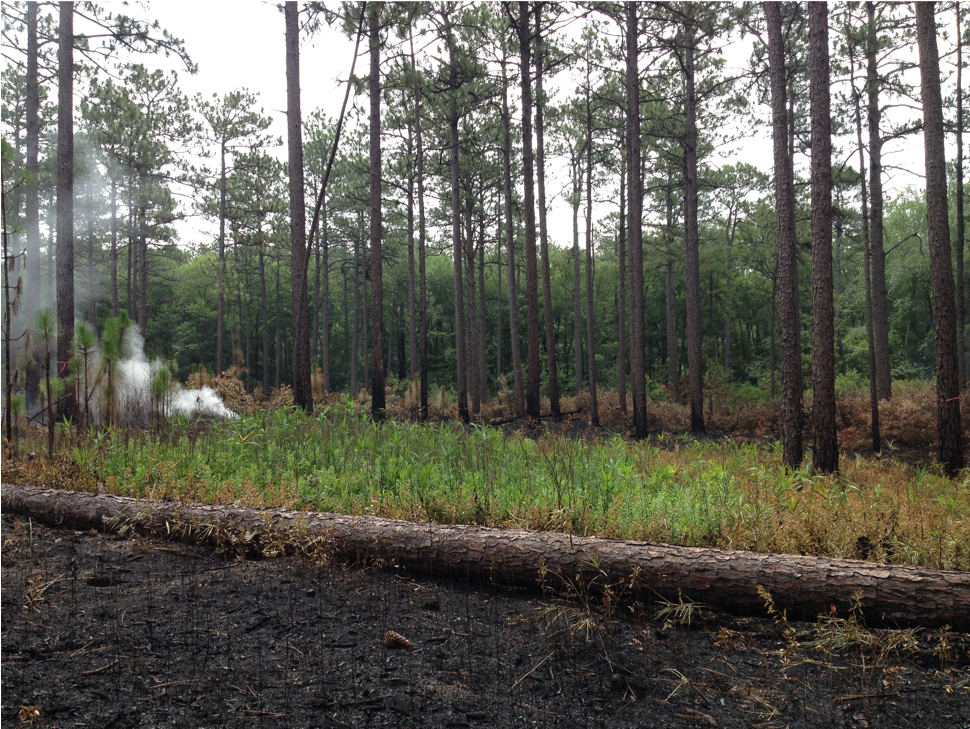|
My PhD research examined how the impacts of disturbances on ecological process are mediated by plants.
Working mostly in longleaf pine forests, I found that soil inorganic nitrogen increases for a short period of time after a fire. This pulse occurs, in part, because plants reduce their nitrogen capture after they burn. However, these plants are well-adapted to the low intensity fires that occur every few years in longleaf pine forests, and they begin to resprout only a few days after a fire. Does this nitrogen pulse contribute to plant resprouting success? In a series of greenhouse and mesocosm experiments, I found that co-dominant species differed in their nitrogen capture and this ability was positively associated with resource acquisitive functional traits. However, differences in resource capture did not translate to a competitive advantage because biomass regrowth was negatively associated with similar resource acquisitive functional traits. Thus, the effect of fire on plant competition was mediated by a physiological tradeoff between fast resource capture, and fast biomass regrowth. In a follow up field study, I found that fires influence understory productivity through their long-term legacy impacts on plant regrowth strategies. Individuals exposed to frequent historical fires resprout quickly in the short-term to a subsequent disturbance. Over a full growing season, however, these individuals have lower performance than individuals exposed to infrequent disturbances. These results indicate that the historical disturbance regime is a stronger driver of plant productivity and competitive ability than short-term changes to resource availability after disturbance. |
Ficken, CD and JP Wright. 2018. Nitrogen uptake and biomass resprouting show contrasting relationships with resource acquisitive and conservative plant traits. Journal of Vegetation Science. doi: 10.1111/jvs.12705.
Ficken, CD and JP Wright. 2017. Effects of fire frequency on litter decomposition as mediated by changes to litter chemistry and soil environmental conditions. PLoS ONE. doi: 10.1371/journal.pone.0186292.
Ficken, CD and JP Wright. 2017. Contributions of microbial activity and ash deposition to post-fire nitrogen availability in a pine savanna. Biogeosciences. doi:10.5194/bg-2016-303.
Ficken, CD and JP Wright. 2017. Effects of fire frequency on litter decomposition as mediated by changes to litter chemistry and soil environmental conditions. PLoS ONE. doi: 10.1371/journal.pone.0186292.
Ficken, CD and JP Wright. 2017. Contributions of microbial activity and ash deposition to post-fire nitrogen availability in a pine savanna. Biogeosciences. doi:10.5194/bg-2016-303.


